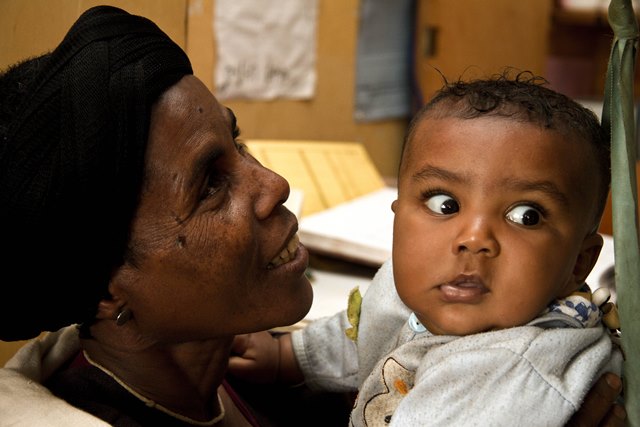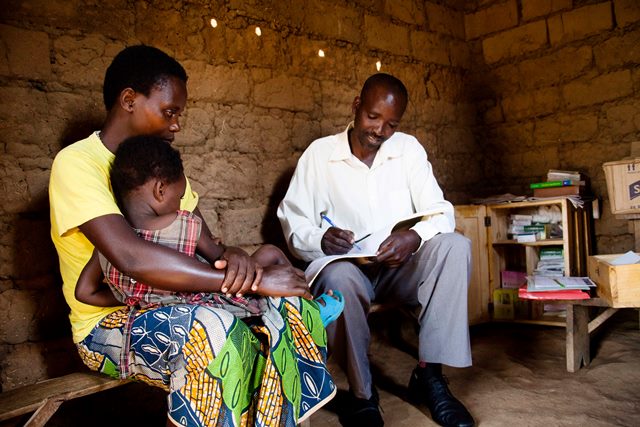
By Alexis Heaton, SC4CCM Country Technical Manager
As we commemorate another World Pneumonia Day this November 12, we must acknowledge and mourn the children still dying from what is a largely preventable, or otherwise treatable, illness. Pneumonia is still the #1 infectious killer of children under age 5 globally, responsible for nearly 1 million child deaths annually. And poor and rural communities are disproportionally affected by limited prevention and treatment. These are the children that we must continue to work for every day to increase access to pneumonia prevention and treatment – to ensure that those numbers continue to decrease quickly and significantly so that no more parents have to see a young child die from a disease that many of us no longer consider deadly.

However, it’s also a day to celebrate the recent successes in reducing the numbers of childhood deaths and acknowledge advances and improvement in the past few years. The really good news is that we know how to prevent and treat pneumonia right now – with amoxicillin. It’s not new, it’s not flashy, it’s not fancy, but it’s effective and inexpensive. New WHO guidelines recommend amoxicillin dispersible tablets for treatment for both non-complicated and severe pneumonia in children. Dispersible tablets can be easily dissolved in a small amount of water or breastmilk so can be easily dispensed to infants and young children as well as older children.
Further, there has been an increased effort to expand treatment for pneumonia to more remote communities by training community health workers to recognize signs of pneumonia and treat children with antibiotics in the communities where they live, often rural and under-served by health system facilities. This has been shown to be effective not only from a treatment perspective but also in expanding access to treatment by bringing care closer to where children live so that it is easier for parents and guardians to have their children be seen when they first show symptoms.
 The challenge is ensuring that amoxicillin is available when and where it is needed – getting it into the drug boxes of CHWs in rural communities. SC4CCM has identified successful practices to improve resupply and information systems to support supply chains to the community level. We have also updated the Quantification Guide for CCM and accompanying video to help countries determine how to best estimate the needs for amoxicillin dispersible tablets for CCM programs. These resources also acknowledge that this product is used for other indications, so quantities supplied need to be sufficient to not only to treat pneumonia or supply community health workers, but to supply all levels of the system and all illnesses for which amoxicillin dispersible tablets would be used.
The challenge is ensuring that amoxicillin is available when and where it is needed – getting it into the drug boxes of CHWs in rural communities. SC4CCM has identified successful practices to improve resupply and information systems to support supply chains to the community level. We have also updated the Quantification Guide for CCM and accompanying video to help countries determine how to best estimate the needs for amoxicillin dispersible tablets for CCM programs. These resources also acknowledge that this product is used for other indications, so quantities supplied need to be sufficient to not only to treat pneumonia or supply community health workers, but to supply all levels of the system and all illnesses for which amoxicillin dispersible tablets would be used.
This last part is important because it requires a level of coordination that is difficult to achieve but critical for meeting pneumonia treatment objectives and reducing preventable childhood deaths. In most countries, the provision of amoxicillin crosses programs, MOH budget lines, donors, and possibly procurement organizations. Developing a cohesive financing and supply plan for amoxicillin that encompasses these multiple levels, uses, and organizations to ensure supplies are sufficient to meet all needs requires a level of coordination that is usually reserved for more expensive or high-priority medicines. Governments, donors, NGOs, and civil society need to come together to prioritize this coordination at national levels to meet our goals and commitments to reduce childhood deaths from pneumonia.

